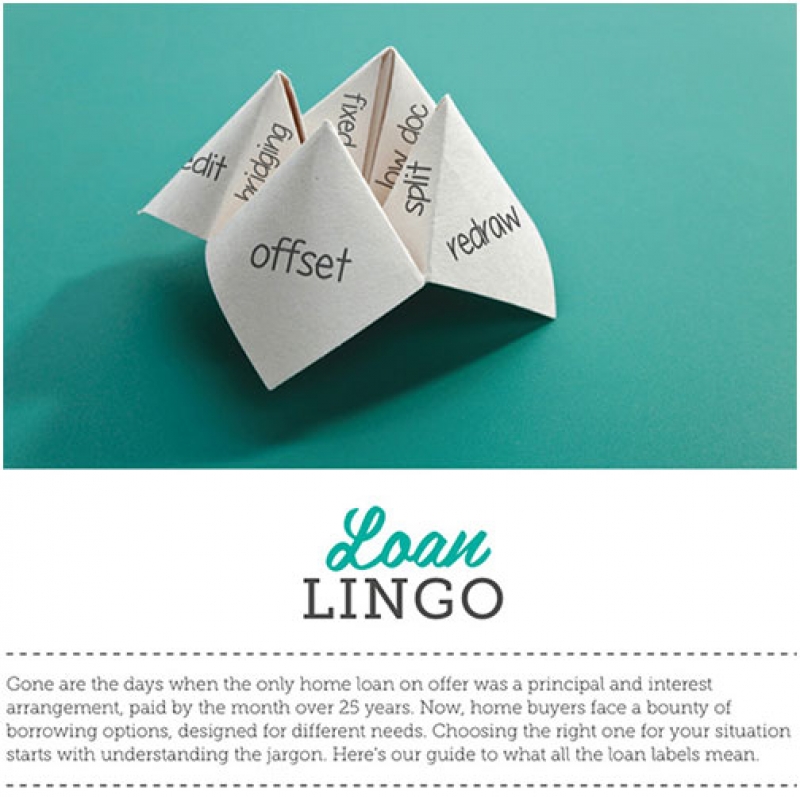VARIABLE LOAN: This is pretty much your stock standard principal and interest loan and still the most popular way for Australians to pay off their mortgage.
Repayments are calculated so that over the term of the loan — usually 25 to 30 years — both the original amount borrowed (the principal) and the interest payable over the term of the loan — are repaid in full by the end of the loan’s term.
The interest rate charged usually varies according to the movements of the official cash rate, which is reviewed monthly by the Reserve Bank. Until very recently, lenders tended to move rates up or down in step with the official rate announcements, but since the global financial crisis, most have become more cautious about passing on rate cuts in full.
Variable loans usually allow for extra payments and, if interest rates dip, you benefit from the savings. On the flip side, if rates rise, you will face higher repayments. If taking out a variable loan, it’s always best to leave some padding in your budget to cover any rate hikes.
FIXED RATE: This is where the interest rate is fixed for a period of time — usually one to five years. The main benefit for the borrower is certainty. The downside is being locked into a rate that may end up above the market if interest rates fall. Fixed rates are often favoured by borrowers who face a change in circumstances, such as having children.
SPLIT: A split loan allows you to have an each way bet on interest rates. You can choose to take part of your loan at a variable interest rate, which will move up or down in line with interest rate movements, and the remainder at a fixed rate, giving you certainty. If rates increase significantly, part of your loan and budget is shielded from the volatility. On the other hand, if they drop over time, you will still have to pay the fixed rate on your nominated portion.
INTEREST ONLY: Interest-only loans have their place in the market, especially among property investors. As the name suggests, you only pay the interest on the loan, usually for a set period of time. Property investors looking to maximise their tax deductions often opt for interest-only loans for the first few years after purchase because they can’t claim principal payments (we recommend you seek independent tax advice if you wish to explore how to maximise your tax deduction). Interest-only arrangements for a set period can also help home owners get through a credit crunch. However, interest-only loans won’t help you pay off your loan and the bank will want the principal paid off at some stage.
OFFSET: An offset account is essentially a savings account that is linked to a loan account. Instead of earning interest on your savings deposit, the funds are used to offset the principal of the loan account.
For example, if you have a home loan of $100,000, plus $10,000 in an offset account, the lender will offset your loan balance with your offset account balance, meaning they would only calculate interest on $90,000. Your loan repayment remains the same, but more of it is used to pay off the principal, reducing the life of your loan.
REDRAW: A redraw facility simply allows you to make extra repayments on your home loan and then access those funds if needed.
LINE-OF-CREDIT: A line-of-credit loan works the same as a credit card, but with a lower interest rate. A line-of-credit allows you to borrow up to a specified amount against the equity in your property, repay that amount and then borrow to the limit again — numerous times. You only pay interest on the amount you use.
You can usually choose to make principal and interest repayments or interest only payments. These loans are increasing in popularity, but require borrowers who want to pay off their mortgage to be disciplined around their expenditure, due to the easy access to funds.
CONSTRUCTION LOAN: These loans allow new home builders and renovators to get on with their projects without borrowing and paying interest on the full amount up front. Instead, progressive payments are made directly to the builder. Construction loans are generally provided for one to two years before reverting to a standard home loan.
LOW DOC: The name gives the impression there are no forms to fill in, but it actually refers to the fact these loans are for borrowers who have trouble providing documents to verify their income. Low document loans are often sought by the self-employed, casual employees or home buyers with a poor credit history.
NO FRILLS: These are generally loans with a lower variable interest rate than standard variable loans. The trade-off for the discount is less flexibility and fewer features. For example, no extra repayments and no redraws.
REVERSE MORTGAGE: Increasing in popularity as Australia’s population ages, reverse mortgages allow retirees to access equity in their property to help fund quality of life or aged care needs. Borrowers have the option to draw down a lump sum or regular part-payments, but are not required to make any repayments during the term of the loan. Instead, interest accrues and the entire loan, plus interest, is repaid on the death of the retiree (usually by the retiree’s estate), or when the retiree moves out of the mortgaged home permanently.
HONEYMOON/INTRODUCTORY: Aimed squarely at first homebuyers, honeymoon loans offer a discount for a limited period, usually 12 months. Borrowers are usually offered a discount on the standard variable rate for the honeymoon period, which means their rate will move up or down with the variable rate, or a discounted fixed rate, which stays fixed for the agreed period.
BRIDGING FINANCE: A handy product if you are buying or building a new home before the sale of your existing one. As the name suggests, it bridges the gap between two home loans. The lender takes security over both properties and lends against them until the sales on both are complete. The loans are generally short-term, and most borrowers only pay the interest during the loan period.
Helpful Information
Monday, 28 October 2013 10:41
Loan Lingo
About Us
Whether you are looking to purchase your first home, renovate, refinance or invest, we’re here to negotiate the right finance for you. We’re a one-stop shop with hundreds of loan options available from across Australia’s leading lenders and we’ll work with you to find the right finance solution to meet your needs
Contact Us
Contact Gladstone Home Loans directly on:
Phone: (07) 4978 7422
Mobile: 0428 780 384
Fax: (07) 4978 7433
Email: [email protected]
Visit our office at:
63 Aramac Drive
Gladstone, QLD 4680


